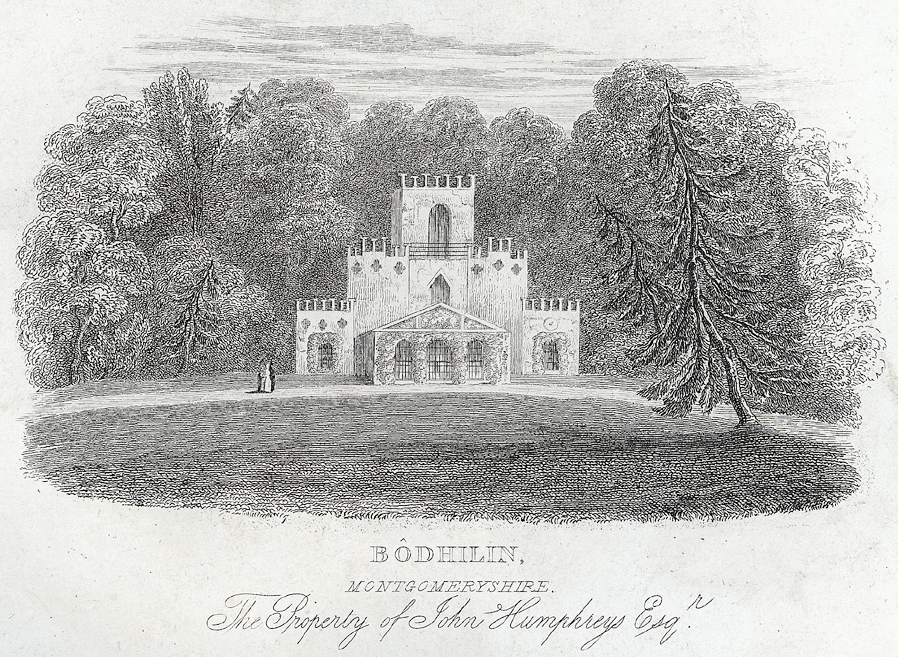|
Peter Pike (priest)
Peter John Pike (b 1953) is a retired Anglican priest: he was Archdeacon of Montgomery, 2012–2018) Pike was educated at the University of Southampton and ordained 1985. After a curacy in Broughton he held incumbencies at Woodplumpton, Briercliffe, Bempton and Berriew Berriew ( cy, Aberriw) is a village and community in Montgomeryshire, Powys, Wales. It is on the Montgomeryshire Canal and the Afon Rhiw, near the confluence (Welsh: ''aber'') with the River Severn (Welsh: Afon Hafren) at , 79 miles (128 k .... References Living people Alumni of the University of Southampton 21st-century Welsh Anglican priests 20th-century Welsh Anglican priests Archdeacons of Montgomery Alumni of Sarum College 1953 births {{ChurchinWales-clergy-stub ... [...More Info...] [...Related Items...] OR: [Wikipedia] [Google] [Baidu] |
Anglican
Anglicanism is a Western Christian tradition that has developed from the practices, liturgy, and identity of the Church of England following the English Reformation, in the context of the Protestant Reformation in Europe. It is one of the largest branches of Christianity, with around 110 million adherents worldwide . Adherents of Anglicanism are called ''Anglicans''; they are also called ''Episcopalians'' in some countries. The majority of Anglicans are members of national or regional ecclesiastical provinces of the international Anglican Communion, which forms the third-largest Christian communion in the world, after the Roman Catholic Church and the Eastern Orthodox Church. These provinces are in full communion with the See of Canterbury and thus with the Archbishop of Canterbury, whom the communion refers to as its ''primus inter pares'' (Latin, 'first among equals'). The Archbishop calls the decennial Lambeth Conference, chairs the meeting of primates, and is t ... [...More Info...] [...Related Items...] OR: [Wikipedia] [Google] [Baidu] |
Bempton
Bempton is a village and civil parish in the East Riding of Yorkshire, England, near the border with North Yorkshire. It is near the North Sea coast and Flamborough Head, and is situated about north of Bridlington. It lies on the B1229 road between Speeton and Flamborough. It is served by Bempton railway station which is on the Yorkshire Coast Line that runs between Hull and Scarborough. The parish of Bempton also contains Buckton village, which is situated directly next to Bempton. According to the 2011 UK census, Bempton parish had a population of 1,040, a slight decrease on the 2001 UK census figure of 1,050. History Bronze Age pit dwellings have been discovered near Bempton. From the mediaeval era until the 19th century Bempton was part of Dickering Wapentake. Between 1894 and 1974 Bempton was a part of the Bridlington Rural District, in the East Riding of Yorkshire. Between 1974 and 1996 it was part of the Borough of North Wolds (later Borough of East Yorkshire ... [...More Info...] [...Related Items...] OR: [Wikipedia] [Google] [Baidu] |
Archdeacons Of Montgomery
Archdeaconry of Montgomery is an archdeaconry within the Diocese of St Asaph. It covers the eastern area of Montgomeryshire and includes Welshpool, Newtown, and Llanfyllin. Originally part of the Archdeaconry of Powys, which dated from the Medieval period. The Archdeaconry of Powys was reconstituted by an Order in Council in 1844, when it was split into the Archdeaconry of Montgomery and the Archdeaconry of St Asaph. In recent years the Archdeacon has lived in 17th century half-timbered Vicarage at Berriew. Archdeacons Former Archdeacons include: * William Clive 1848–1861, Vicar of Welshpool 1819–1865. He was the son of William Clive MP, who was the brother of Sir Robert Clive * Henry Powell Ffoulkes 1861–1886, Rector of Whittington, Oswestry, 1879–1886 *1886-1916: (d.) David Thomas (Archdeacon of Montgomery). Rector of Llandrinio. A notable Church historian. *1916–1925: (res.): Grimaldi Davis *1925–1938: (d.): Ellis Griffith *1938–1944: (ret.): Evan Thomas ... [...More Info...] [...Related Items...] OR: [Wikipedia] [Google] [Baidu] |
21st-century Welsh Anglican Priests
The 1st century was the century spanning AD 1 (Roman numerals, I) through AD 100 (Roman numerals, C) according to the Julian calendar. It is often written as the or to distinguish it from the 1st century BC (or BCE) which preceded it. The 1st century is considered part of the Classical era, epoch, or History by period, historical period. The 1st century also saw the Christianity in the 1st century, appearance of Christianity. During this period, Europe, North Africa and the Near East fell under increasing domination by the Roman Empire, which continued expanding, most notably conquering Britain under the emperor Claudius (AD 43). The reforms introduced by Augustus during his long reign stabilized the empire after the turmoil of the previous century's civil wars. Later in the century the Julio-Claudian dynasty, which had been founded by Augustus, came to an end with the suicide of Nero in AD 68. There followed the famous Year of Four Emperors, a brief period of civil war and inst ... [...More Info...] [...Related Items...] OR: [Wikipedia] [Google] [Baidu] |
Alumni Of The University Of Southampton
This is a list of University of Southampton people, including famous officers, staff (past and present) and student alumni from the University of Southampton or historical institutions from which the current university derives. Officers Chancellors Hartley Institution and Hartley College Chancellors were known as principals before the formation of University College *1862–1873 Francis Bond *1873–1874 Charles Blackader *1875–1895 Thomas Shore *1896–1900 R. Stewart *1900–1902 Spencer Richardson University College Chancellors were known as presidents before the formation of university *1902–1907 Arthur Wellesley, 4th Duke of Wellington *1908–1908 Sir Alfred Wills *1910–1913 Claude Montefiore (Acting President) *1913–1934 Claude Montefiore *1934–1947 Lord John Seely *1948–1949 Lord Wyndham Portal *1949–1953 Gerald Wellesley, 7th Duke of Wellington University *1952–1962 Gerald Wellesley, 7th Duke of Wellington *1964–1974 Lord Keith Murray *1974– ... [...More Info...] [...Related Items...] OR: [Wikipedia] [Google] [Baidu] |
Living People
Related categories * :Year of birth missing (living people) / :Year of birth unknown * :Date of birth missing (living people) / :Date of birth unknown * :Place of birth missing (living people) / :Place of birth unknown * :Year of death missing / :Year of death unknown * :Date of death missing / :Date of death unknown * :Place of death missing / :Place of death unknown * :Missing middle or first names See also * :Dead people * :Template:L, which generates this category or death years, and birth year and sort keys. : {{DEFAULTSORT:Living people 21st-century people People by status ... [...More Info...] [...Related Items...] OR: [Wikipedia] [Google] [Baidu] |
Berriew
Berriew ( cy, Aberriw) is a village and community in Montgomeryshire, Powys, Wales. It is on the Montgomeryshire Canal and the Afon Rhiw, near the confluence (Welsh: ''aber'') with the River Severn (Welsh: Afon Hafren) at , 79 miles (128 km) from Cardiff and 151 miles (243 km) from London. The village itself had a population of 283. and the community also includes Garthmyl Hall and Refail. Buildings and architecture Berriew contains many architecturally important buildings. There are 103 Listed Buildings in Berriew of which 5 are Grade II*. Nearly a quarter of the listed building are connected with the Montgomeryshire Canal which runs across the parish to the S.E. of Berriew. The most important of the listed buildings are Vaynor, which is probably the earliest brick built house of the mid-17th. century still standing in Montgomeryshire, and Glansevern, designed by the notable Shrewsbury architect Joseph Bromfield in the Greek Revival style and probably the best ... [...More Info...] [...Related Items...] OR: [Wikipedia] [Google] [Baidu] |
Briercliffe
Briercliffe (historically Briercliffe-with-Extwistle) is a civil parish in the borough of Burnley, in Lancashire, England. It is situated north of Burnley. The parish contains suburbs of Burnley (including Harle Syke and Haggate), and the rural area north east of the town. Hamlets in the parish include Cockden, Lane Bottom and in the Extwistle area, the tiny hamlet of Roggerham. According to the United Kingdom Census 2011, the parish has a population of 4,031. The parish adjoins the Burnley parish of Worsthorne-with-Hurstwood and the unparished area of Burnley, the Pendle parishes of Brierfield, Nelson and Trawden Forest and West Yorkshire. History The name Briercliffe probably comes from the Old English words " briar" and , a steep slope or declivity. Extwistle may have been named from the junction (O.E. ) of Swinden Water and the River Don, while the first element could be a corruption of oxen. The parish contains a number of sites of early human occupation, includi ... [...More Info...] [...Related Items...] OR: [Wikipedia] [Google] [Baidu] |
Priest
A priest is a religious leader authorized to perform the sacred rituals of a religion, especially as a mediatory agent between humans and one or more deities. They also have the authority or power to administer religious rites; in particular, rites of sacrifice to, and propitiation of, a deity or deities. Their office or position is the 'priesthood', a term which also may apply to such persons collectively. A priest may have the duty to hear confessions periodically, give marriage counseling, provide prenuptial counseling, give spiritual direction, teach catechism, or visit those confined indoors, such as the sick in hospitals and nursing homes. Description According to the trifunctional hypothesis of prehistoric Proto-Indo-European society, priests have existed since the earliest of times and in the simplest societies, most likely as a result of agricultural surplus and consequent social stratification. The necessity to read sacred texts and keep temple or church r ... [...More Info...] [...Related Items...] OR: [Wikipedia] [Google] [Baidu] |
Woodplumpton
Woodplumpton is a village and civil parish in the City of Preston, Lancashire, England, located north of Preston. Geography It is part of the Fylde, a flat area of land between the Forest of Bowland and the Lancashire coast. Community The village contains a primary school, the Wheatsheaf pub and a church. The school is C of E and has a strong link with the church. St Anne's Church is the location of the grave of Meg Shelton, the notorious Fylde Hag, who was buried there in 1705 after being accused of witchcraft. Parish The parish includes the villages of Eaves, Catforth and Lower Bartle. Higher Plumpton is also included in the parish, but like Lower Bartle, is a very small hamlet. In the 19th century Woodplumpton was known as Plumpton-Wood. The parish was part of Preston Rural District throughout its existence from 1894 to 1974. In 1974 the parish became part of the Borough of Preston, which became a city in 2002. Demography In 1901 the population of the parish was 1,2 ... [...More Info...] [...Related Items...] OR: [Wikipedia] [Google] [Baidu] |
Vicar
A vicar (; Latin: '' vicarius'') is a representative, deputy or substitute; anyone acting "in the person of" or agent for a superior (compare "vicarious" in the sense of "at second hand"). Linguistically, ''vicar'' is cognate with the English prefix "vice", similarly meaning "deputy". The title appears in a number of Christian ecclesiastical contexts, but also as an administrative title, or title modifier, in the Roman Empire. In addition, in the Holy Roman Empire a local representative of the emperor, perhaps an archduke, might be styled " vicar". Roman Catholic Church The Pope uses the title ''Vicarius Christi'', meaning the ''vicar of Christ''. In Catholic canon law, ''a vicar is the representative of any ecclesiastic'' entity. The Romans had used the term to describe officials subordinate to the praetorian prefects. In the early Christian churches, bishops likewise had their vicars, such as the archdeacons and archpriests, and also the rural priest, the curate who had ... [...More Info...] [...Related Items...] OR: [Wikipedia] [Google] [Baidu] |





